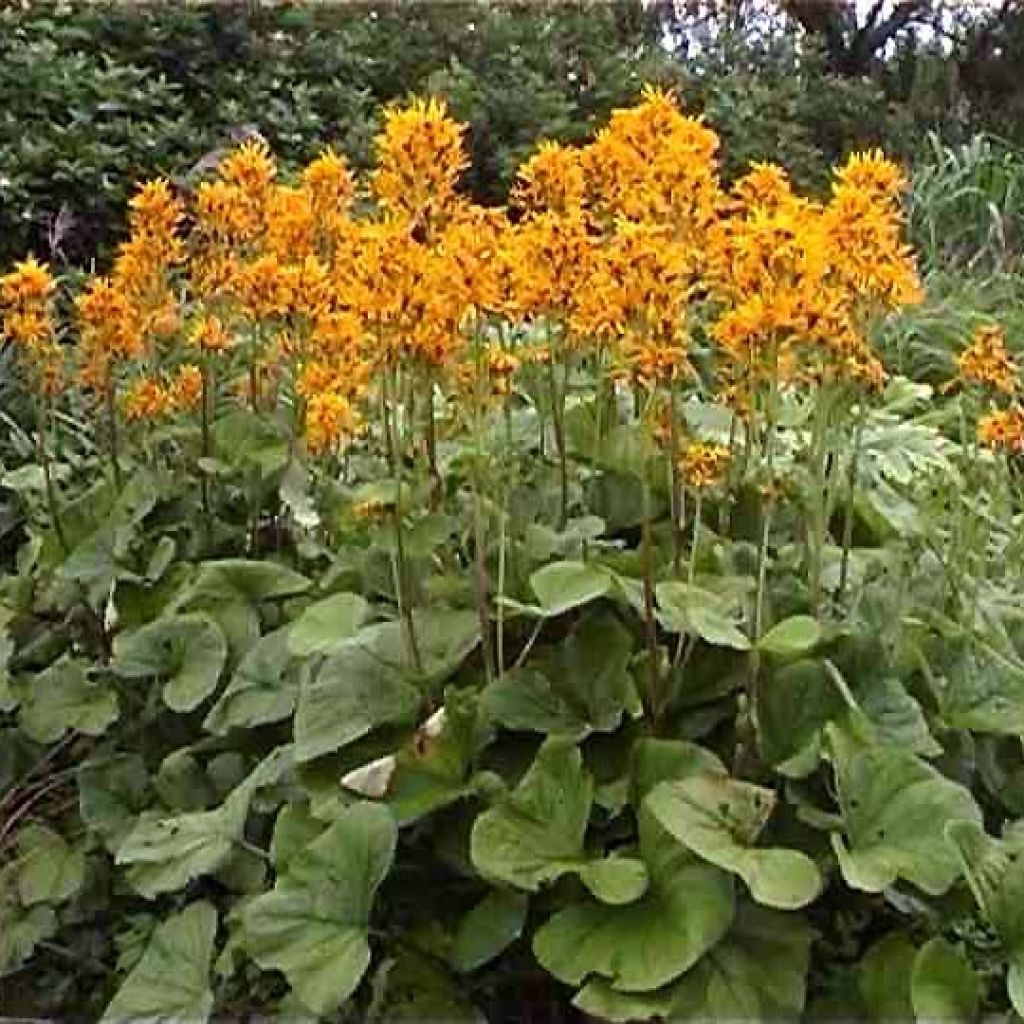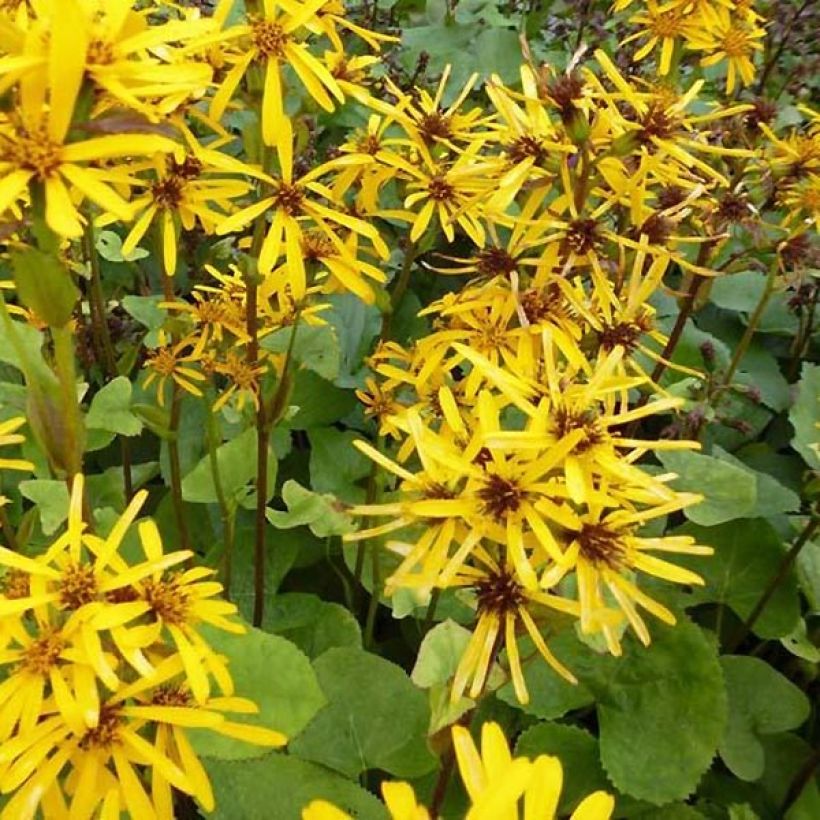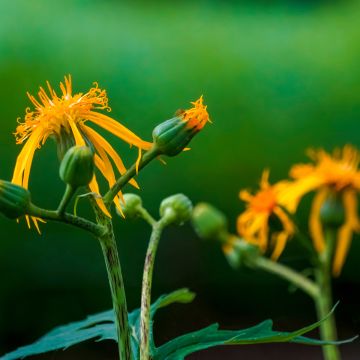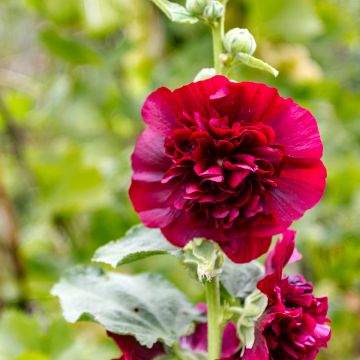

Ligularia x hessei - Leopard Plant


Ligularia x hessei - Leopard Plant


Ligularia x hessei - Leopard Plant
Ligularia x hessei - Leopard Plant
Ligularia x hessei
Leopard Plant
Special offer!
Receive a €20 voucher for any order over €90 (excluding delivery costs, credit notes, and plastic-free options)!
1- Add your favorite plants to your cart.
2- Once you have reached €90, confirm your order (you can even choose the delivery date!).
3- As soon as your order is shipped, you will receive an email containing your voucher code, valid for 3 months (90 days).
Your voucher is unique and can only be used once, for any order with a minimum value of €20, excluding delivery costs.
Can be combined with other current offers, non-divisible and non-refundable.
Why not try an alternative variety in stock?
View all →This plant carries a 12 months recovery warranty
More information
We guarantee the quality of our plants for a full growing cycle, and will replace at our expense any plant that fails to recover under normal climatic and planting conditions.
Would this plant suit my garden?
Set up your Plantfit profile →
Description
Ligularia x hessei is distinguished by its bushy clump of large, round, shiny green leaves and its bright flowers in erect panicles of large golden yellow heads with brown centres in autumn. It is a perennial native to wet places that thrives in a bright but not scorching exposure in heavy, deep and rich soil, especially where moisture is not lacking! Of large dimensions, it perfectly punctuates the edges of water bodies and provides green borders along shaded paths. In groups, it also forms a dense groundcover.
Ligularia x hessei is a horticultural hybrid belonging to the large family of Asteraceae. In spring this perennial forms a bushy and compact clump reaching 150 cm (59in) in height and 80 cm (32in) in width. The large leaves, approximately 10 to 25 cm (4 to 10in) long, are carried by a long petiole. They are rounded, heart-shaped at the base, with slightly toothed edges. From August to October, pyramidal panicles of heads bloom, which we call flowers and resemble large loose spikes. Each head, 2 to 10 cm (1 to 4in) wide, is composed of a row of ligules in a bright, vivid golden yellow colour, arranged in a collar around a central, darker disk. Oange buds burst open at the top of tall, red and branched stems. The vegetation of the Ligularia disappears in winter and regrows in spring.
Plant Ligularia x hessei in moist, rich, deep, neutral soil. This plant cannot tolerate lack of water and adapts very well to clay soils, if they are humus-rich and not waterlogged. Ligularia hessei can be planted in groups of 3 to 6 plants or as a specimen, for example in pond borders or in very humid areas of the garden. In flower beds and borders, associate it with other flowering plants in warm colours such as crocosmias, cannas, dahlias, roses, and rudbeckias. It sometimes naturalises where the soil is permanently moist, protected from the burning rays of the sun. It is a good plant to enhance a shaded area, on the north side of the house. It also forms a lush groundcover along pathways or in partially shaded edges.
Report an error about the product description
Ligularia x hessei - Leopard Plant in pictures




Flowering
Foliage
Plant habit
Botanical data
Ligularia
x hessei
Asteraceae
Leopard Plant
Cultivar or hybrid
Other Ligularia
View all →Planting and care
Plant Ligularia hessei in moist, rich, deep, neutral to acidic soil. This plant does not tolerate a lack of water. It adapts well to clay soils, if they are not waterlogged. Plant this Ligularia in partial shade or in a sunny position, sheltered from strong winds and scorching sunlight. Adding compost at the start of the growing season will promote the growth of this hungry plant. This Ligularia requires little maintenance, a light clearing of the clumps can be done in autumn. Special attention should be paid to frequent attacks by gastropods.
Planting period
Intended location
Care
This item has not been reviewed yet - be the first to leave a review about it.
Similar products
Haven't found what you were looking for?
Hardiness is the lowest winter temperature a plant can endure without suffering serious damage or even dying. However, hardiness is affected by location (a sheltered area, such as a patio), protection (winter cover) and soil type (hardiness is improved by well-drained soil).

Photo Sharing Terms & Conditions
In order to encourage gardeners to interact and share their experiences, Promesse de fleurs offers various media enabling content to be uploaded onto its Site - in particular via the ‘Photo sharing’ module.
The User agrees to refrain from:
- Posting any content that is illegal, prejudicial, insulting, racist, inciteful to hatred, revisionist, contrary to public decency, that infringes on privacy or on the privacy rights of third parties, in particular the publicity rights of persons and goods, intellectual property rights, or the right to privacy.
- Submitting content on behalf of a third party;
- Impersonate the identity of a third party and/or publish any personal information about a third party;
In general, the User undertakes to refrain from any unethical behaviour.
All Content (in particular text, comments, files, images, photos, videos, creative works, etc.), which may be subject to property or intellectual property rights, image or other private rights, shall remain the property of the User, subject to the limited rights granted by the terms of the licence granted by Promesse de fleurs as stated below. Users are at liberty to publish or not to publish such Content on the Site, notably via the ‘Photo Sharing’ facility, and accept that this Content shall be made public and freely accessible, notably on the Internet.
Users further acknowledge, undertake to have ,and guarantee that they hold all necessary rights and permissions to publish such material on the Site, in particular with regard to the legislation in force pertaining to any privacy, property, intellectual property, image, or contractual rights, or rights of any other nature. By publishing such Content on the Site, Users acknowledge accepting full liability as publishers of the Content within the meaning of the law, and grant Promesse de fleurs, free of charge, an inclusive, worldwide licence for the said Content for the entire duration of its publication, including all reproduction, representation, up/downloading, displaying, performing, transmission, and storage rights.
Users also grant permission for their name to be linked to the Content and accept that this link may not always be made available.
By engaging in posting material, Users consent to their Content becoming automatically accessible on the Internet, in particular on other sites and/or blogs and/or web pages of the Promesse de fleurs site, including in particular social pages and the Promesse de fleurs catalogue.
Users may secure the removal of entrusted content free of charge by issuing a simple request via our contact form.
The flowering period indicated on our website applies to countries and regions located in USDA zone 8 (France, the United Kingdom, Ireland, the Netherlands, etc.)
It will vary according to where you live:
- In zones 9 to 10 (Italy, Spain, Greece, etc.), flowering will occur about 2 to 4 weeks earlier.
- In zones 6 to 7 (Germany, Poland, Slovenia, and lower mountainous regions), flowering will be delayed by 2 to 3 weeks.
- In zone 5 (Central Europe, Scandinavia), blooming will be delayed by 3 to 5 weeks.
In temperate climates, pruning of spring-flowering shrubs (forsythia, spireas, etc.) should be done just after flowering.
Pruning of summer-flowering shrubs (Indian Lilac, Perovskia, etc.) can be done in winter or spring.
In cold regions as well as with frost-sensitive plants, avoid pruning too early when severe frosts may still occur.
The planting period indicated on our website applies to countries and regions located in USDA zone 8 (France, United Kingdom, Ireland, Netherlands).
It will vary according to where you live:
- In Mediterranean zones (Marseille, Madrid, Milan, etc.), autumn and winter are the best planting periods.
- In continental zones (Strasbourg, Munich, Vienna, etc.), delay planting by 2 to 3 weeks in spring and bring it forward by 2 to 4 weeks in autumn.
- In mountainous regions (the Alps, Pyrenees, Carpathians, etc.), it is best to plant in late spring (May-June) or late summer (August-September).
The harvesting period indicated on our website applies to countries and regions in USDA zone 8 (France, England, Ireland, the Netherlands).
In colder areas (Scandinavia, Poland, Austria...) fruit and vegetable harvests are likely to be delayed by 3-4 weeks.
In warmer areas (Italy, Spain, Greece, etc.), harvesting will probably take place earlier, depending on weather conditions.
The sowing periods indicated on our website apply to countries and regions within USDA Zone 8 (France, UK, Ireland, Netherlands).
In colder areas (Scandinavia, Poland, Austria...), delay any outdoor sowing by 3-4 weeks, or sow under glass.
In warmer climes (Italy, Spain, Greece, etc.), bring outdoor sowing forward by a few weeks.




















































